Ethni-City
Walk down any of San Cristobal de las Casas’ centro stone streets lined with sun-warmed colored façades of houses, restaurants, stores, and galleries. Take in a deep breath of the cool pine-and-coffee-tinged mountain air and with it, a sense of the rich blend of Spanish colonial and indigenous influences that continue to define this complex-yet-laid-back Mexican city.
Once you’ve taken the requisite photo of the mustard-yellow baroque cathedral (where Subcomandante Marcos held famous negotiations with the Mexican government in 1994), head north to the Templo de Santo Domingo to take another and perhaps practice your Spanish in the purchase of a rebozo or other textiles from the nearby crafts market.
Later, gain a new understanding of the indigenous woman who sold you the piece by entering the Na Bolom: “Jaguar House” in the native Tzotzil language. This edifice originally housed anthropologist and photographer Trudy Blom, along with her archaeologist husband, Frans, who dug into researching the indigenous peoples of eastern Chiapas. The house is now home to their photo, book, and artifact collections, serving as a museum, research center, and hotel.
Visit the Museo del Ámbar to look for insects fossilized along with the pine resin in this Chiapas “gem,” and then dispel any aches from all that walking with a traditional Mayan herb prescription from the Museo de la Medicina Maya (or just learn more about Mayan medical practices).
When the mountain fog clears, head for the hills: The Cerro de San Cristobal and the Cerro de Guadalupe, each topped with a church, offer spectacular vistas of the colorful serape of a city below.
It's a Jungle Out There
Don your pith helmet, your sense of adventure, and some mosquito repellant for good measure, and set out for the jungle ruins of Palenque. Okay, you don’t really need the helmet, but do wear comfortable shoes for exploring these famous Mayan ruins, only about one-tenth of which are considered “discovered,” since the rest still lie covered by the thick jungle foliage.
Palenque’s story -- that of one of several neighboring warring city-states with powerful rulers and social hierarchies with steps steeper that those of their temples -- is mostly told through its extensive hieroglyphics. The plot’s climax occurs in the seventh century AD, when Pakal the Great renews the kingdom’s splendor after a downturn.
But then comes Palenque’s denouement at the hands of the bellicose peoples of Toniná, not too far away in the Chiapas highlands. Warriors to the core, the Mayan of Toniná sought to cut off the head of Palenque – literally. The stucco panels, which differentiate Toniná’s ruins from other similar ones, depict numerous bloody decapitations, both of no-name captives and of at least one well-known leader from Palenque.
Your language school in San Cristobal can arrange your trip to Palenque, Toniná, and other archaeological sites in the area.
Modern Maya
Your Spanish language school can also arrange your visit to the nearby Tzotzil villages of San Juan Chamula and San Lorenzo Zinacantán. While there isn’t so much Spanish actually spoken there, it is your opportunity to see a truly indigenous communities as they are today.
Chamula uniquely boasts both its own rule – Mexican police and military are not allowed – and its own brand of Catholicism, heavily mixed with pre-Hispanic practices such as curanderos (shaman). While the customs and traditional dress beg for you to take a photo, many inhabitants will shy away from the camera and indeed, in certain circumstances such as during religious ceremonies, a shutter click will get you thrown out of the village!
Tzotzil Maya also represent about 98% of Zinacantán’s brightly clad residents, known especially for their flowerful “feasts” – carefully socially regulated celebrations of days dedicated mostly to either a saint or one of many of the apparitions of the Catholic holy family. The largest of these events is that of Zinacantán’s patron saint, San Lorenzo (Saint Lawrence).
Want to see more around San Cristobal? Ask your school to help you get to the town of Comitán, near the Guatemalan border -- also a slice of the modern Maya in a Spanish colonial setting. A popular destination mostly for Mexican tourists, Comitán’s main square comes alive in the evenings with music or performances (often religious in nature).
If you feel land-locked, don’t forget that some still-unspoiled tropical coast lies along Chiapas’ south edge too. Sack out in a hammock on Boca del Cielo’s San Marcos beach, a strip of sand between the “mouth” of the La Joya lagoon and the ocean; kayak, swim, or hunt for turtle eggs during the day; and dine on delectable fresh fish and shrimp for comida.
Water Water Everywhere
The great Mexican outdoors more your style? Your Spanish school can arrange trips as well to
- Agua Azul, near Palenque, where actually rapids cascade photo-perfectly over rocks into an actually blue (when it hasn’t rained) pool below.
- Misol-Ha, also near Palenque, where you can take a cooling dip below a105-ft waterfall in said waters, or just get sprayed by the mist from the cave underneath.
- El Chichonal, an active volcano in northwest Chiapas.
- Colón lakes, to explore by boat or foot the connected web of lagoons, rivers, and waterfalls. Ask the locals with your new-and-improved Spanish where not to go because of crocodiles!
- Cañón del Sumidero, north of Tuxtla Gutierrez, an impressive canyon navigated normally by boat on the Grijalva river that runs through it.
- Sima de las Cotorras, northwest of Tuxtla, an impressive sinkhole in the nature reserve El Ocote, and home to a swarm of green-feathered parrots.
Other Activities in San Cristobal
Your school in San Cristobal also offers additional fun ways to practice your newly learned Spanish, such as salsa dancing, cooking, cultural workshops and more.
Sound like where you'd like to be? Sign up today to study Spanish in San Cristobal!





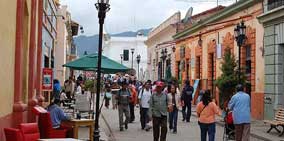
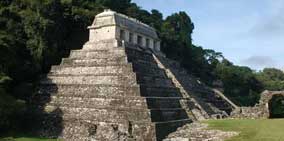
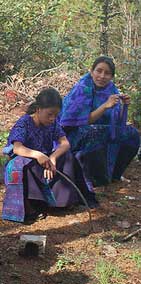
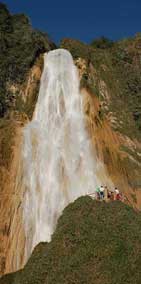

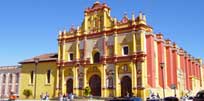
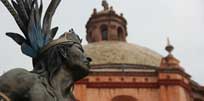
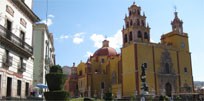
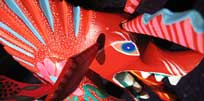
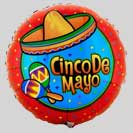 Celebrate Cinco de Mayo, commemoration day of the Battle of Puebla (1862), by learning some real Spanish -- not just the word cerveza -- south of the border. Be in impressive, colonial Puebla itself by then, or somewhere else in Mexico, to join the fiesta.
Celebrate Cinco de Mayo, commemoration day of the Battle of Puebla (1862), by learning some real Spanish -- not just the word cerveza -- south of the border. Be in impressive, colonial Puebla itself by then, or somewhere else in Mexico, to join the fiesta.